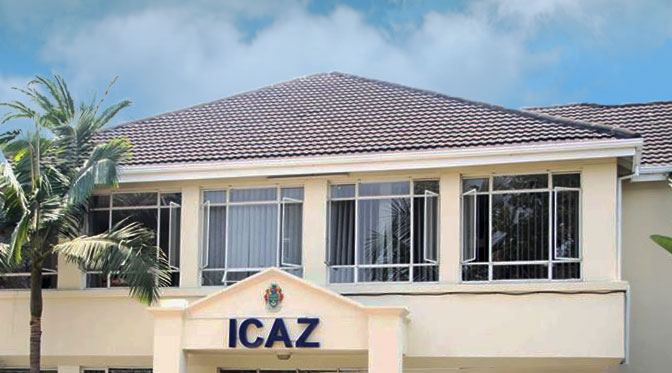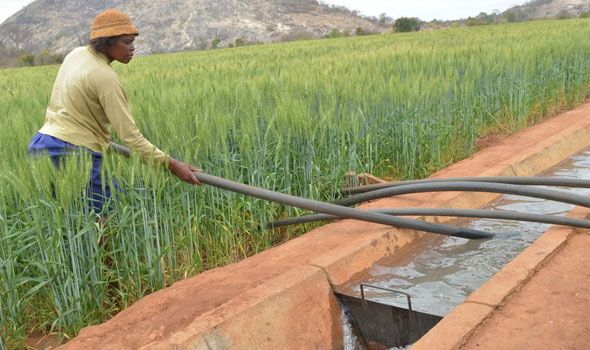Africa’s debt conundrum
Some observers believe that African governments are falling into the same debt patterns that spiralled out of control in the 1990s and into the new millennium, resulting in a fairly robust debt cancellation programme.
This campaign culminated in the 2005 G7 Finance ministers’ agreement that triggered US$130 billion in debt being cancelled for 36 countries.
The COVID-19 crisis and associated economic downturn obviously had a huge impact on the finances of most governments around the world.
The lowest income countries were able to halt debt repayments during the pandemic as a result of the introduction of the G20’s Debt Service Suspension Initiative (DSSI) in May 2020, but this expired in December 2021 and never secured the hoped-for support of private creditors.
Nevertheless, it provided US$6 billion debt relief in 2020 and another US$7 billion in 2021 for the 48 countries that signed up to it, mostly in Africa. The Interntional Monetary Fund (IMF) provided another US$851 million in debt service relief to 29 of the world’s poorest countries.
Total African external public debt reached US$726 billion in 2021, up US$27 billion on the previous year, a fairly modest 3% increase.
However, it is clear that the situation varies a great deal from country to country. In December 2012, the IMF said that 60% of low income countries were then at high risk of debt distress, double the level at the end of 2015.
Evidence of the ability of African States to cope with current debt levels includes the fact that only three governments — Chad, Ethiopia and Zambia — have sought debt restructuring under the G20’s new common framework, which was introduced to replace the DSSI.
It has a big advantage in that it includes China among its members. Zambia was the first African State to default during the pandemic when it failed to make a US$42,5 million eurobond repayment in November 2020.
There have been big changes in the balance of government credit in recent years. Firstly, while multilateral and bilateral lenders previously dominated, private credit is growing rapidly.
In eastern and southern Africa, for instance, the proportion of sovereign debt held in multilateral loans has fallen to 47% of the total, with bilateral loans steady at 35% and private finance now accounting for 19%.
Chinese institutions have become far bigger lenders to African governments since the 2005 agreement, although the amount of money on offer appears to have sharply receded more recently.
Secondly, African debt is increasingly issued in euros, with 20 African governments holding outstanding eurobonds, with a total face value of US$140 billion at the end of 2021. Thirdly, longer issues are now possible, even of up to 30 years.
Finally, the fact that more African governments take out eurobonds — and on a more regular basis — may be an indication that the debt position of many of them is not particularly dangerous. It demonstrates that the markets are still prepared to lend, while their reliance on the markets probably influences their economic policies and encourages mainstream plans. In short, they have become more reliable borrowers.
Despite rising debt levels, there appears to be continued strong appetite for the sovereign debt of many African countries, as South Africa’s US$3 billion, Angola’s US$1,75 billion and Nigeria’s US$1,25 billion eurobonds earlier this year attest. However, it appears that many private lenders now seek assurances that their loans will not be rolled into future debt restructuring programmes.
Even if growing African debt is a problem, it could be argued that it is of no greater concern than that of many industrialised countries. When looking at debt levels across the world, the position of African governments is fairly standard.
In terms of the most recent available debt-to-gross domestic product (GDP) ratios, Venezuela performs worst at 350%, which is clearly unsustainable, but Japan, surprisingly, comes next with 266%. Sudan is the highest-ranked African State in third, with 259%.
A total of 24 countries have debt-to-GDP ratios in excess of 100% but only six of these are in Africa, with Eritrea, Cabo Verde, Libya, Mozambique and Zambia joining Sudan. The US also features in that group at 124% and France with 113%.
This is not to argue that sound fiscal management is unimportant, or that it is advisable to keep increasing borrowing at every stage of an economic cycle. Far from it, as higher debt means higher repayments, which reduce the amount of money available for more productive uses in the future.
Yet it does mean that the position of every country should be taken on its merits without automatically seeing a combination of the words “debt” and “Africa” as a bad thing.
Some debts do take a long time to pay off. It is fairly well known that the UK made its final payment on the loans taken out from the US to finance its efforts in the Second World War in 2006. However, it is less recognised that it was not until 2015 that the United Kindom finally paid off the debt that it incurred in compensating slave owners for the abolition of slavery in 1835.
The first debt can be worn with pride; the second only with shame.
Analysis of the African countries with the lowest debt-to-GDP ratios is interesting as it throws up excellent cases of sound economic management — for example, Botswana, with 24,2%. Gaborone has a long track record of steady growth, based on sound management of its diamond revenues. However, it also includes Swaziland and Burundi, which perhaps find it more difficult to secure access to debt markets than most other countries.
If we accept that taking on debt is sometimes advisable and sometimes not, there are two main criteria to help decide which is which. Firstly, what is the purpose of the finance? Is it to cushion the impact of a short-term crisis or to help promote long-term growth? Or is it to cover recurrent spending over an extended period?
There is a big difference between seeking finance to increase the salaries of middle-class civil servants or investing in specific infrastructural projects that can lift long-term growth prospects — or providing social support to ensure that the poorest in society can survive crises, such as the recent pandemic.
Secondly, how transparent are the terms of that lending? Most loans granted to African governments by Chinese lenders have been described as being made on concessionary terms but detailed terms are rarely published, which makes it difficult to assess their attractiveness.
It also makes it challenging for other potential lenders to consider the wisdom of offering further finance. For instance, Chinese creditors were believed to hold about 35-40% of Zambia’s estimated US$17,3 billion debt at the start of this year, but the exact figures are unknown.
Completely hidden debt is even more dangerous. Mozambique’s external debt ballooned from 37,5% of GDP in 2011 to 110,5% by 2018 on the back of secret loans to finance the purchase of tuna fishing boats, a radar surveillance network and patrol boats at inflated prices. Apart from the bad deals and big loans, the fact that the government opted to hide the financing resulted in the country’s financial reputation crumbling.-newsday









